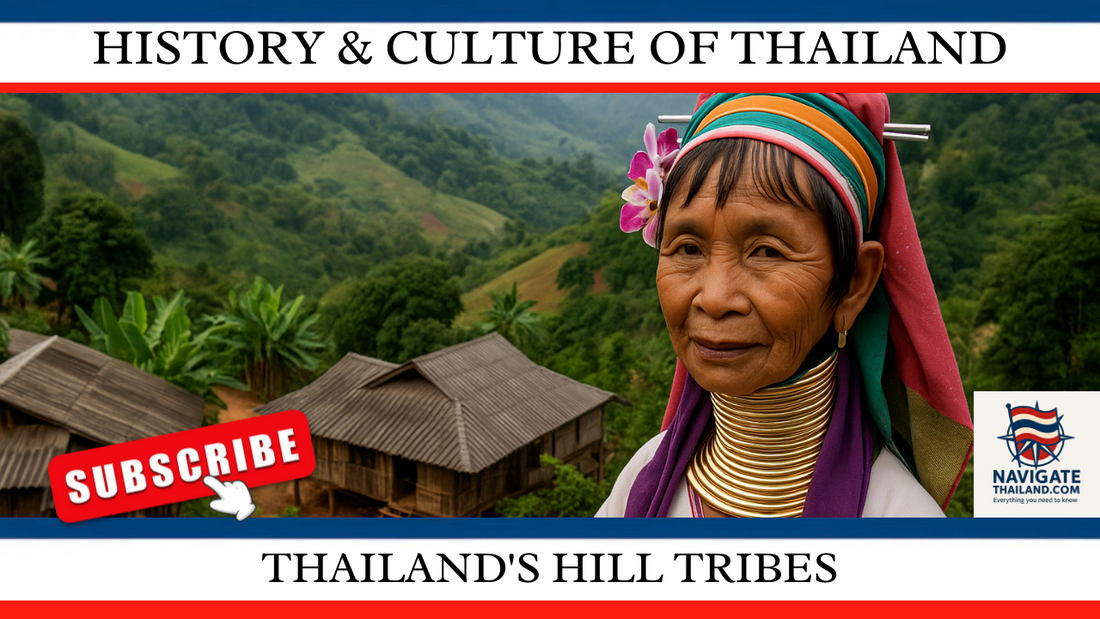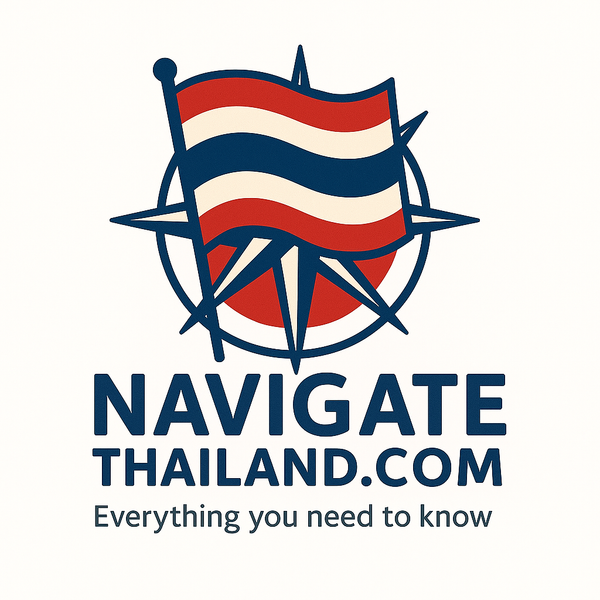
Thailand’s Hill Tribes: A Journey Through Culture and Tradition
Share
Nestled among Thailand’s northern mountains, an array of hill tribes carry vibrant histories, languages, and customs unique to this part of the world. Known collectively as the “hill tribes” or “chao khao” in Thai, these communities offer a rare glimpse into Thailand’s indigenous heritage, allowing visitors to experience a cultural richness that has endured despite the pressures of modern life. As hill tribe tourism has grown, many of these tribes have managed to retain their traditions, maintaining a strong sense of identity. Let’s dive into the origins, language, and traditions of Thailand’s main hill tribes to better understand the unique lives of these mountain communities.
A Glimpse into the History of Thailand’s Hill Tribes
The hill tribes of Thailand began migrating from southern China, Myanmar, Laos, and Vietnam centuries ago, each group driven by different factors like conflict, poverty, or the search for more fertile land. Over time, they settled across the mountainous regions of northern Thailand, especially in provinces like Chiang Mai, Chiang Rai, Mae Hong Son, and Tak. Today, there are about one million hill tribe people in Thailand, with each tribe preserving a distinct language, culture, and spiritual identity.
Historically, these tribes were somewhat isolated, living off the land through traditional farming techniques like slash-and-burn agriculture. Yet, as Thailand moved into the 20th century, policies began shifting, integrating the hill tribes more closely with Thai society through Thai language education, changes in agricultural practices, and tourism as a significant economic resource. Each tribe continues to uphold many of its traditions, contributing a rich cultural layer to Thailand’s identity.
Meet Thailand’s Hill Tribes: Origins, Language, and Culture
1. The Karen
Origins: The Karen are one of Thailand’s largest hill tribes, with origins believed to trace back to Tibet and Myanmar. They settled mainly in the mountains of Mae Hong Son, Chiang Mai, and Chiang Rai, creating strong, cohesive communities.
Language: Karen communities speak a range of dialects, including Sgaw Karen and Pwo Karen, from the Tibeto-Burman language family. While Thai is commonly taught in schools, many older Karen still primarily use their native language.
Religion: Although many Karen people have converted to Buddhism and Christianity, traditional animist beliefs remain strong, particularly in agricultural rituals that honor nature.
Economy: Agriculture is the backbone of Karen communities, with rice cultivation being particularly important. Recently, some villages have expanded to cash crops like coffee and vegetables, often sold to local markets. Homestay programs have become a popular way for Karen communities to supplement their income while sharing their culture with visitors.
Fun Fact: Known for their weaving skills, Karen women create stunning, handwoven textiles. In some Karen subgroups, women are recognized for their “long-neck” tradition, wearing brass rings around their necks that create a truly distinct cultural identity.
2. The Hmong
Origins: Originally from southern China, the Hmong migrated to Thailand in the 19th century, finding homes in Chiang Mai and Chiang Rai.
Language: The Hmong speak Hmong-Mien languages, mainly White Hmong and Green Hmong dialects, and even have their own Romanized script.
Religion: A unique blend of animism and ancestor worship is practiced by the Hmong, with spirituality tied closely to rituals that honor natural spirits and ancestors. Christian missionary efforts have also influenced some communities.
Economy: Historically known for opium cultivation, the Hmong transitioned to farming rice, corn, and tea as part of anti-narcotic initiatives. Tourism also provides income, with many Hmong communities sharing their elaborate embroidery and vibrant New Year celebrations with visitors.
Fun Fact: The Hmong New Year is an unforgettable celebration, filled with traditional games, colorful attire, and a ball-tossing ceremony, bringing the community and visitors together in celebration.
3. The Lahu
Origins: The Lahu people trace their roots back to Tibet and Yunnan, China. After passing through Myanmar, they eventually settled in Thailand’s northern provinces like Chiang Mai and Mae Hong Son.
Language: Lahu dialects, including Black Lahu and Red Lahu, are part of the Tibeto-Burman language family and are widely spoken within their communities.
Religion: While Christian missionaries have influenced some Lahu communities, traditional animist beliefs remain strong, with rituals honoring ancestors and local spirits.
Economy: Agriculture plays a crucial role in Lahu life, with crops like rice, vegetables, and coffee supporting their communities. Some villages also cultivate medicinal plants, using their herbal knowledge to earn an income.
Fun Fact: The Lahu are skilled in herbal medicine and are well-known for their forest knowledge, which has helped them live sustainably off the land for generations.
4. The Akha
Origins: Originally from Yunnan, China, the Akha migrated to Thailand in the early 20th century, forming villages mainly in Chiang Rai and Chiang Mai.
Language: Akha, a Tibeto-Burman language, is spoken widely within Akha communities and is written using a Latin-based alphabet.
Religion: Akha culture blends animism with ancestor worship, revolving around rituals like their annual festival dedicated to the village spirit gate, which is believed to protect them from harmful spirits.
Economy: While subsistence farming is traditional, many Akha now grow cash crops such as coffee, tea, and spices. Their silver jewelry and textiles are also popular items among tourists.
Fun Fact: Akha villages are marked by their elaborate spirit gates, designed to keep harmful spirits at bay and often decorated with intricate carvings.
5. The Lisu
Origins: Migrating from Tibet and Myanmar, the Lisu settled in northern Thailand in the early 20th century, particularly around Chiang Mai and Mae Hong Son.
Language: The Lisu language is a Tibeto-Burman language with its own unique script, although younger generations increasingly speak Thai.
Religion: Many Lisu are now Christian, though traditional animist and ancestor worship practices remain common. The Lisu New Year, celebrated with bright costumes and dance, is both a spiritual and social event.
Economy: Transitioning from subsistence farming, the Lisu now cultivate cash crops like vegetables and flowers. They are also skilled artisans, producing handicrafts that provide a valuable income source.
Fun Fact: The Lisu’s bright, intricately embroidered costumes are proudly worn during New Year celebrations, creating a striking cultural display.
6. The Yao (Mien)
Origins: The Yao, originally from southern China, migrated to Thailand in the 19th and early 20th centuries and settled primarily in Chiang Rai and Nan.
Language: Yao, or Mien, is part of the Hmong-Mien language family and retains a script based on Chinese characters, linking them closely to their cultural roots.
Religion: The Yao practice a blend of Taoism, animism, and ancestor worship, which is evident in their ceremonial altars and elaborate rituals.
Economy: Yao communities grow rice, corn, and medicinal herbs, and are renowned for producing stunning silver jewelry that has become popular among tourists.
Fun Fact: Yao silver jewelry, symbolizing wealth and social status, is a centerpiece of their cultural celebrations, adding beauty and tradition to every festival.
Conclusion
The hill tribes of Thailand form a cultural mosaic, each tribe contributing its unique history, language, and customs. While tourism has both supported and challenged these communities, many hill tribes continue to honor their traditions, offering visitors an authentic look into Thailand’s indigenous heritage. When visiting, it’s essential to approach with respect, appreciating the resilience and diversity of these communities and the rich cultural tapestry they add to Thailand.
References
1. Keyes, C.F. (1977). The Golden Peninsula: Culture and Adaptation in Mainland Southeast Asia.
2. Lee, G.Y., & Tapp, N. (2010). Culture and Customs of the Hmong.
3. Walker, A.R. (1976). The Highland People of Northern Thailand.
4. Lewis, P. (1984). Akha History and Culture.
5. Eberhard, D. (2009). Ethnic Identity and the State in Northern Thailand.
6. Michaud, J. (1997). The Yao of Northern Thailand.
Read more of our Thailand blog series:
Thai Food Guide:Traditional Recipes and Street Eats
Everything Travellers Need to know
Thailand travel ebooks and language guides
Thailand Travel Apparel & Souvenir Gifts
Subscribe to our YouTube channel Navigate Thailand to see our most popular Thailand travel blogs turned into videos:
Navigate Thailand YouTube channel
